If you’re heading to Iceland for your next adventure, knowing what to expect when you arrive will help you make the most of every moment.
Research also shows that the anticipation felt during the weeks and months prior to an experience provides a significant mental health boost. So, to help you get started, we’ve collated our favorite practical tips for planning ahead – to guarantee a successful trip to Iceland.
Countdown to your trip…
12. Getting to Iceland
Iceland is tucked just below the Arctic Circle, midway between North America and mainland Europe, so by far, the easiest way to get to Iceland is by air.
Across the country, there are five airports. However, most international flights use Keflavik International Airport, located 48km from the capital city, Reykjavik. Several direct flights from North America and Europe arrive daily into Keflavik.
Icelandair is Iceland’s only airline, but multiple international airlines – including Delta, United Airlines, British Airways, EasyJet, Jet2, American Airlines, Air Canada, and Air France – fly into Keflavik Airport, opening Iceland up to the entire world.
When booking flights, remember Iceland is on Greenwich Mean Time (GMT), or UTC +0, and we don’t adjust for daylight saving time.
11. The best time to visit
Iceland is an all-year-round destination, and each season offers a different experience. For example, the country’s proximity to the Arctic Circle means that in summer, the sun never fully dips below the horizon – so it never gets dark (remember to pack a sleeping mask)! On the flip side, winter brings very short days, with only a few hours of daylight expected on December days.
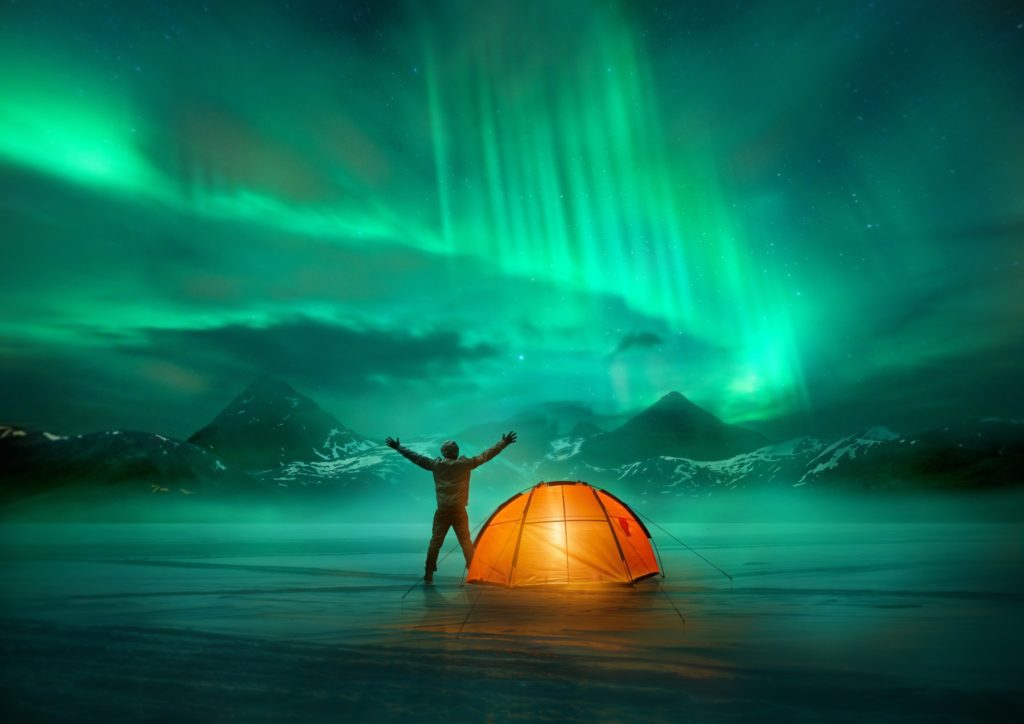
The best time to visit really depends on your Icelandic wish list! Putting in a little research to understand Iceland’s top attractions and when they are at their best is time well spent. For example, winter is perfect for exploring ice caves or chasing the Northern Lights. But, if whale watching is your thing, June or July offers the best chances of seeing blue, humpback, or orca whales.
10. Icelandic weather
Iceland isn’t (as its name suggests) very icy. Only 11% of the country is permanently under the ice. Even in winter, not all areas are covered in snow or ice; in spring and summer, you’ll find plenty of lush, green landscapes.
Average temperatures in Reykjavik range from -0.6°C in January to 12.8°C in July.
Rain is just as likely as snow, and it’s often windy.
Multiple weather conditions frequently happen in just one day, which means the keyword to remember about the Icelandic weather is: changeable!
| Month | Average temperatures Reykjavik Celsius (Fahrenheit) |
|---|---|
| Jan | -0.6 (30.9) |
| Feb | 0.7 (33.3) |
| Mar | 2.2 (36.0) |
| Apr | 5.2 (41.4) |
| May | 6.0 (42.8) |
| Jun | 10.7 (51.3) |
| Jul | 12.8 (55) |
| Aug | 11.0 (51.8) |
| Sept | 7.9 (46.2) |
| Oct | 5.8 (42.4) |
| Nov | 3.1 (37.6) |
| Dec | 1.3 (34.3) |
9. What to pack
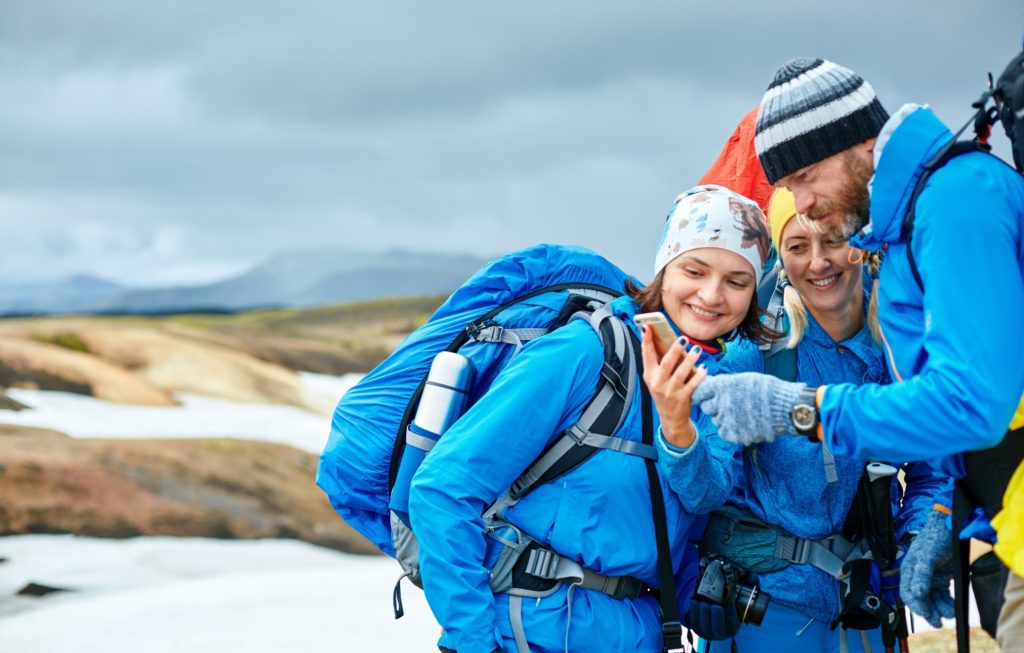
There is a famous Icelandic saying: ‘There is no such thing as bad weather, just bad clothing.’
Heeding the wisdom of this local saying is vital when it comes to knowing what to pack.
Here’s our little secret: it’s all about layers. Think layer, layer, and more layers, and you’ll arrive well-prepared.
For self-drive adventurers, smart packing will keep you warm and dry on the road.
Here are our essential items:
- Robust walking shoes
- Rain- and windproof jacket
- Waterproof trousers
- Fleece or lightweight sweaters
- Hat
- Scarf
- Gloves
Swim gear and a quick-dry towel are also essential – as no matter when you visit, taking a dip in at least one geothermal bath is a definite must.
For those planning an adventurous camping trip, read our recent blog, which covers the essential items to pack for a camping trip in Iceland.
Another less obvious essential is sunglasses, and in summer, insect repellent can be very handy. In winter, or if you plan to hike in the highlands, we recommend adding thermal underwear, hiking boots, and thick socks.
8. Getting around Iceland
Hiring a car is a very popular way to explore Iceland. It gives a great sense of freedom, and you can travel from hotel to hotel, go campervanning or even sleep under canvas (in the warmer months).
The route options are endless, whether you tackle the Golden Circle, hit the Ring Road, or hone in on a specific area, like the remote highlands or the South Coast.
Things to know if you’re planning to hire a vehicle:
- Driving license – you need to have held your license for at least one year.
- Age – to rent a car, you must be at least 20 years old; for 4WD vehicles, this rises to 23.
- Safety – always check the road conditions before you set out. Remember that Highland Roads (F-Roads) have gravel surfaces and require extra caution. Many of these roads remain closed until the beginning of June, only opening for the summer months. To navigate F-Roads, you must have a 4WD vehicle.
If you don’t fancy taking the driving seat, why not explore using public transport? Iceland doesn’t have trains, but the Strætó public bus service (spot the iconic yellow buses) covers an extensive area, and a flexible bus pass allows you to hop on/hop off services across the Strætó route system.
In the East and Westfjords, local bus networks are available, and in summer, the Highland Bus roars into action. You’ll also find numerous bus tour companies operating day trips and package tours to key tourist destinations across the country.
7. Winter driving in Iceland
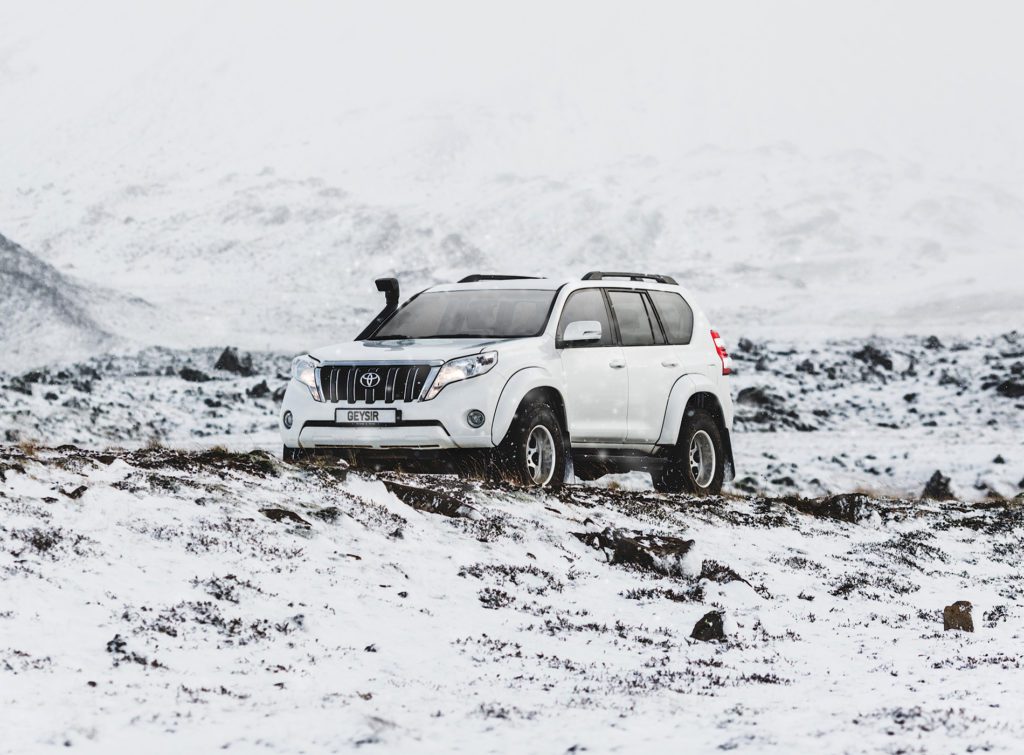
We’ve already mentioned the importance of safety if you’re planning a self-drive adventure. However, this is paramount if you visit during the winter months (October – April) when many Icelandic roads become unsafe and unpassable.
Before you arrive, please read our helpful advice on winter driving or contact us to discuss the best itinerary options for a safe winter adventure in Iceland.
6. Icelandic food
The beauty of Icelandic food is that it is grown in an environment that offers clean spring water, fresh air, and low pollution levels. This results in fresh, delicious food. But what can you expect to see on the menu?
Fish and seafood remain a staple part of the Icelandic diet. The waters of the North Atlantic offer a ready supply of cod, halibut, ray, and lobster, and if you visit in summer, expect to see freshwater salmon and trout on the menu too!
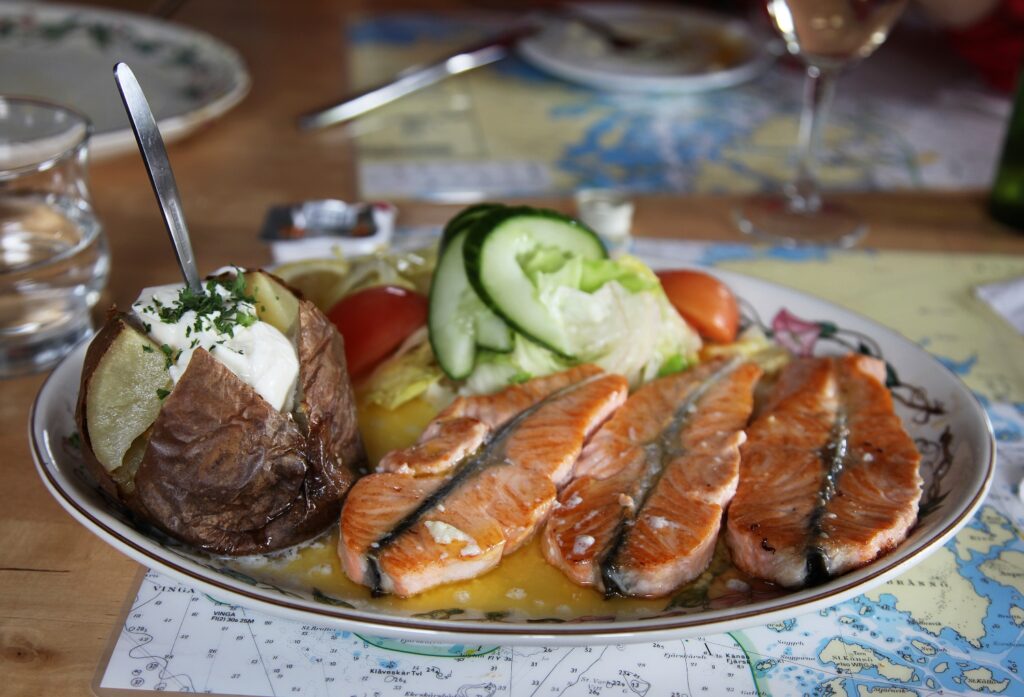
Locals will proudly state that Icelandic lamb is the best in the world. Many traditional dishes involve locally produced lamb, which has a distinct game-like flavor – created by free-roaming sheep that primarily eat wild highland herbs and grasses.
Other highlights to try include Skyr, a yogurt-like product that’s low in fat and lactose and high in protein. It’s particularly tasty when served with wild Icelandic berries and cream!
If you’re an adventurous foodie, perhaps you’ll seek out some of the more interesting traditional Icelandic foods:
- Harðfiskur – dried fish
- Hákarl – fermented shark
- Súrir hrútspungar – whey-pickled sheep testicles
- Svið – burned sheep heads
Yum!
Vegetarians and vegans can also rest assured that Icelandic menus are rapidly expanding to offer excellent choices, and the country enjoys a plentiful supply of fresh herbs and vegetables all year round.
5. Currency and money matters
Iceland’s currency is the krona (ISK). You can exchange money at the airport, in banks, and at currency exchanges.
VISA and MasterCard credit cards are widely accepted across Iceland. You can also access cash advance services at all banks and ATMs for VISA, MasterCard, and Diners Club.
For debit cards, Electron and Maestro are widely accepted.
Cash is available from ATMs across Iceland, and they require a PIN.
Traveller’s cheques are accepted at banks, larger hotels, and tourist centers, but these are increasingly less common.
Please note: if you’re visiting from the USA, you may need to obtain a chip and pin card from your bank, as the Icelandic system requires a 4-digit pin to authorize purchases (instead of a signature).
4. Plug sockets and electricity
Sockets across Iceland require the standard two-prong Europlug. So, if you’re traveling from the USA or the UK, you’ll need a plug adapter (a Northern Europe adapter or adapter type C or F).
Socket voltage is 50Hz/220 volts, so please check the label on your laptop, mobile chargers, and any other devices, as you may need a converter and a plug adapter.
3. Public holidays
If your stay in Iceland coincides with a public holiday, please remember that many shops and all banks and government offices will be closed.
| Holiday | 2023 dates |
|---|---|
| Maundy Thursday | April 6* |
| Good Friday | April 7* |
| Easter Sunday | April 9* |
| Easter Monday | April 10* |
| First day of Summer | April 20* |
| Labour Day | May 1 |
| Ascension Day | May 18* |
| Whit Sunday | May 28* |
| Whit Monday | May 29* |
| National Day | June 17 |
| Bank Holiday Monday | August 7* |
| Christmas Eve (PM), Christmas Day, and Boxing Day | December 24-26 |
| *Changes every year |
2. Keeping in touch
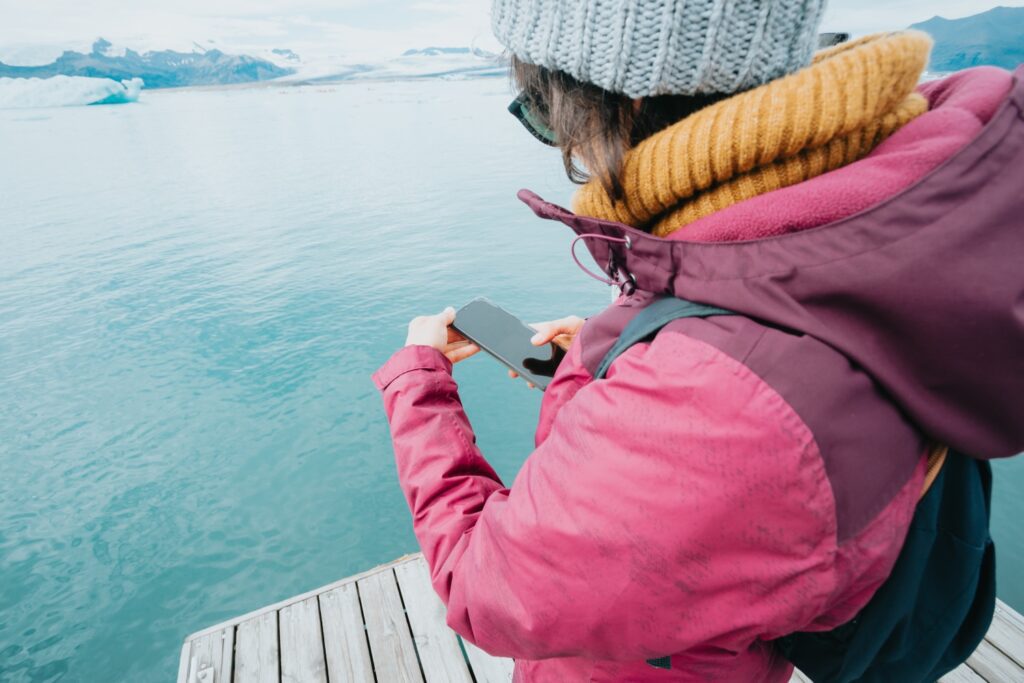
While you’ll be too busy having fun to miss home too much… knowing how to keep in touch is essential.
Tech-savvy Icelanders are ahead of the game regarding communications, and there is an excellent mobile phone network. Coverage spans all towns and almost every transport route. But, if you head somewhere remote, please consider that coverage may fail.
Most European mobiles work on Iceland’s GSM network but might need to be ‘unlocked.’ North American mobiles often can’t access the GSM network, so renting a phone during your stay is a good option, or you can buy a cheap cellphone at the airport when you arrive. Alternatively, you can purchase prepaid SIM cards from Síminn, Nova, or Vodafone.
Wi-Fi and internet access are excellent in Iceland too. You’ll find free Wi-Fi in many cafés, hotels, and other public spaces, particularly in Reykjavik. In addition, 3G internet is widely available, and in many towns, there are internet cafés or internet points in tourist information centers and hotels.
1. Buckle up; you’re almost ready for take-off…
Now you know what to expect when you arrive, all that’s left is the best bit – planning your activities! You’ll find plenty of inspiration in the rest of our blog, where we share all the top tourist experiences Iceland has to offer – get planning, as you’ll be here before you know it!
Back